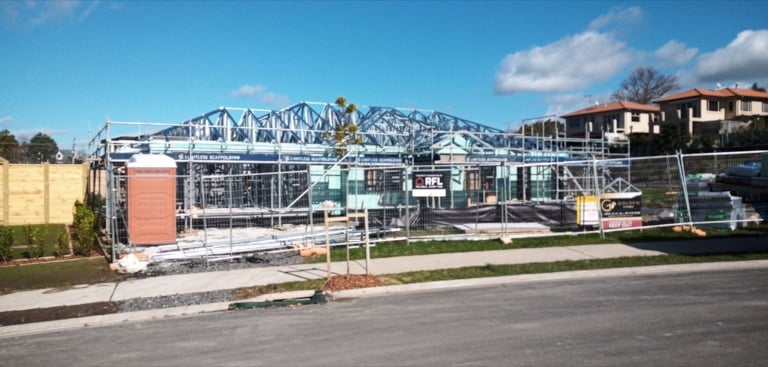
Is this going to be the new leaky homes, when they start rusting/corroding in about ten years' time?
|
|
|
If it is every commercial building will be the same. Steel framing is the predominant framing in commercial buildings.
Handle9:If it is every commercial building will be the same. Steel framing is the predominant framing in commercial buildings.
Isn't that a helluva lot more substantial? This stuff looked like someone had made it on a press brake.
Supposed to be OK for 50 years - so long as they're constructed properly.
The thing that stuffs galvanising fast is water and/or salt, then the steel rusts away. As all the framing should be more-or less sealed off, then it should be okay.
That said, looking at older homes close to the sea in New Brighton, Chch, with a surf beach and diurnal easterly during the day, stuff rusts - and it rusts very fast. Everything from the lawnmower, family chariot, the roof, shed door etc - returns to the earth as dust.
Yep it's a golden home, they built ours with this framing too.
https://www.goldenhomes.co.nz/features/steel-framing
The 50 year "warranty" covers coastal areas too BTW.
Only problem we've encountered is that Zog (who make the frames) do not deal with any one other than Golden Homes who aren't interested in extensions (only do new builds). So if we extend we will probably end up with timber frames in the new portion which is a shame.
neb:Handle9:Isn't that a helluva lot more substantial? This stuff looked like someone had made it on a press brake.
If it is every commercial building will be the same. Steel framing is the predominant framing in commercial buildings.
Depends on the wall. Pretty much all partition framing is steel
I would prefer timber, and IMO it makes it easier to modify the house in the future. . I also heard from someone who owns a steel house, is that steel framing can be noisy and transfer noise across the house more than timber. Not sure how true that is though.
The biggest benefit of steel framing is its stability and ‘trueness’.
No warping, twisting, shrinkage, nail pops, etc. Elements are machined off-site to the correct length.
“We’ve arranged a society based on science and technology, in which nobody understands anything about science technology. Carl Sagan 1996
mattwnz:
I would prefer timber, and IMO it makes it easier to modify the house in the future. . I also heard from someone who owns a steel house, is that steel framing can be noisy and transfer noise across the house more than timber. Not sure how true that is though.
I've also heard this from people who have lived in steel framed houses. Never again they said.
Believe it or not, timber framing performs much better in fire.
neb: I was out walking today and came by this new build, in a coastal area: Is this going to be the new leaky homes, when they start rusting/corroding in about ten years' time?
We have galv steel outside on deck on boats. Structural components made of galv steel tend to last about 15 years in that environment - constant exposure to saltwater, moving parts, flexing under load and getting knocked around. Even then, the underlying steel is structurally sound.
With modern cavity construction, I wouldn't be worried about a bit of freshwater on galv steel framing. The steel framing I have seen is designed so that water runs off rather than ponds, and steel isn't absorbent like wood.
Mike
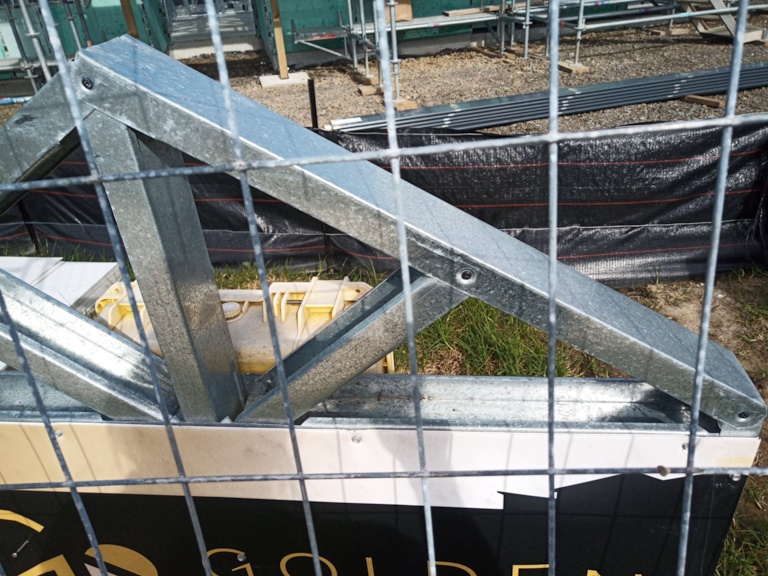
You can see the "made on a press brake" appearance there. Here's some more shots for people wondering what it looks like:
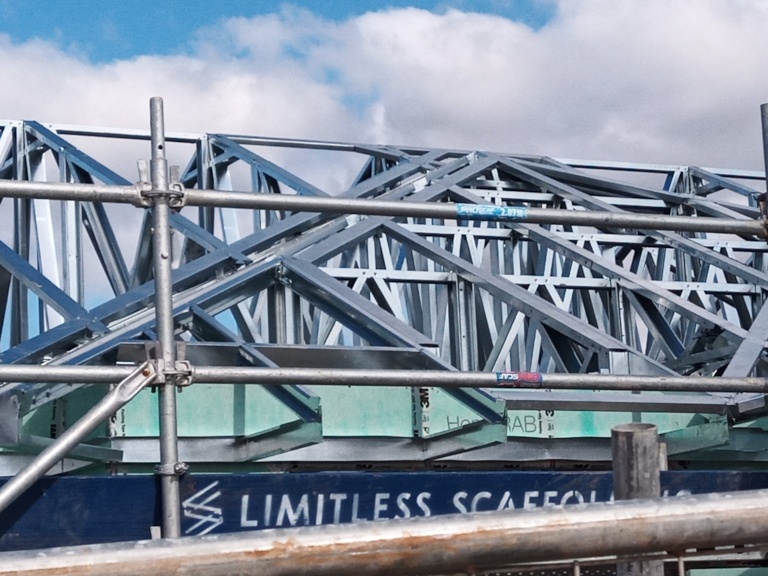
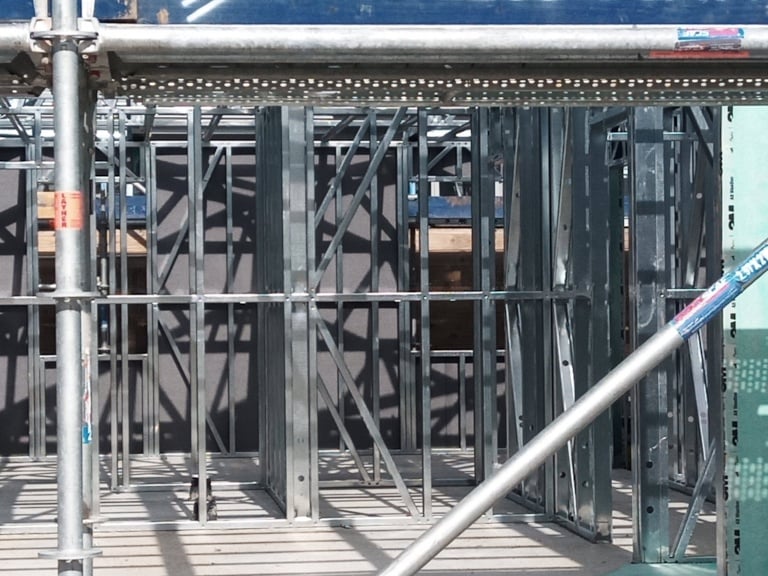
Here's a closeup, it certainly ain't RHS which is what the commercial-use stuff looks like:

Note that those are multiple... don't want to call them beams, maybe sticks would be better, piled on top of each other which makes it look like more than it is.
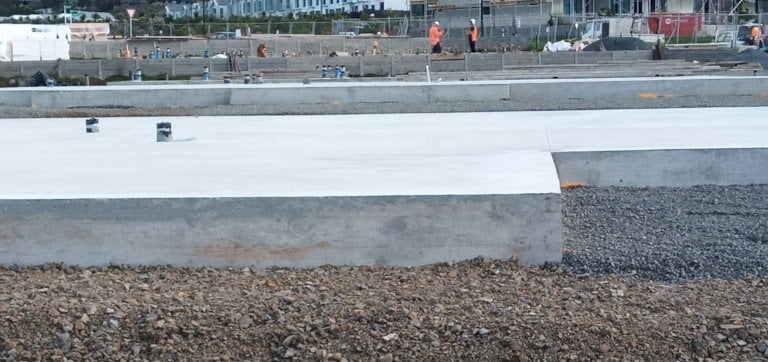
The photo doesn't show it that well but from another side I'd estimate about 40cm of concrete thickness. This is for residential buildings, that's an insane amount of concrete for a house.
Yeah maybe 40cm around the edge, but won't be the whole slab.
Froglotion:Yeah maybe 40cm around the edge, but won't be the whole slab.
Sure, but why raise it up that high? You're still pouring a ton more concrete than the usual 100mm slab even if a lot of the middle portion is hardfill.
Ah, I know! Its that thick because they're interring the bodies of all the people killed by 5G in the centre portions. Devilishly clever.
On a more serious note, I don't think it's concerns about flooding since surrounding houses are built at more normal levels.
Could be a rib-raft slab, which is built on top of a compacted hardfill base. I don't know, just pointing out houses don't have 40cm thick slabs. But every slab will have something similar to a 40cm perimeter thickness. Mine does, but due to it not needing to be rib-raft (not crap ground), the depth is below ground level.
|
|
|
